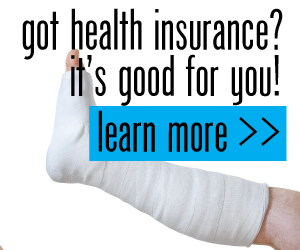 We have a big problem in the United States – opioid use for pain and its subsequent use in the resulting addict. Although I dealt with a good number of addicts during my nursing career, I don’t pretend to be an expert on addiction. But, I want to throw out a few observations.
We have a big problem in the United States – opioid use for pain and its subsequent use in the resulting addict. Although I dealt with a good number of addicts during my nursing career, I don’t pretend to be an expert on addiction. But, I want to throw out a few observations.
- An article in a December 2016 issue of the Charleston Gazette-Mail blares the headline, “Drug firms poured 780M painkillers into WV amid rise of overdoses.
- The Center for Disease Control (CDC) website reports that, “Today, nearly half of all U.S. opioid overdose deaths involve a prescription opioid. In 2015, more than 15,000 people died from overdoses involving prescription opioids.”
- The CDC reports, “According to data from the DEA, the amount of heroin seized each year at the southwest border of the United States was approximately 500 kg during 2000–2008. This amount quadrupled to 2,196 kg in 2013,” and “Heroin-related deaths more than tripled between 2010 and 2015, with 12,989 heroin deaths in 2015.”
In my eyes, the problem is really two problems – the initial treatment with addictive drugs and the switch from drug use for pain to drug use for addiction. We have become a pill-popping society. A pill to go to sleep; a pill to wake up. A pill to make you poop and a pill to take when you’re pooping too much. Every ache and pain and discomfort calls for a medication.
Do we really wonder why we have a drug addiction problem?
I’m not negating the need for pain medication. However, I believe we fail as a society to more actively explore and support non-drug therapies for pain. We too easily reach for the drugs. They are easy to dispense. They don’t take a lot of time to write a prescription and are covered by most insurances. They initially are not too expensive, until you figure in the costs of the addiction epidemic that has resulted.
There are many non-drug approaches available and effective for pain. However, they are delegated to the also-ran category.
It’s known that some people use only homeopathy to treat pain for relatively serious injuries. For others, acupuncture has effectively treated sciatica and other pain conditions without drugs. Chiropractic care is well-known for back pain relief. Soft tissue pain responds well to therapeutic massage. All of these modalities can be used for migraines, post-injury pain, post-surgery pain, musculoskeletal pain, and many other types of pain.
Many consumers don’t even know that these modalities exist or that they are an effective option for pain control. The problem is that the drug/surgery medical model is promoted and supported at the expense of natural therapies. If covered by insurance at all, the natural therapies are restricted by number of visits or type of provider.
Natural therapies work with your body. It is said that the therapy does not do the healing, but simply brings your body to the point that your body can do the healing. Adjustments, massage, homeopathy, and acupuncture may not work immediately because they are accepted as natural healing rather than symptom masking and suppression.
Chiropractic adjustments may be able to relieve that sciatica but it may take 15 adjustments. Maybe only 12 visits are approved by insurance. Some patients will understand and pay out-of-pocket for the additional three visits. Some can’t or won’t get the additional treatments.
You may want acupuncture from a Traditional Chinese Medicine practitioner who practiced it as a child in a family taught throughout the generations, but this practitioner is not legal. For acupuncture, you are required by your insurance to go to a Medical Doctor with minimal training who may not be as effective as your chosen practitioner. So instead, you opt for the pills.
Until we make some changes in our healthcare system – promote non-drug therapy instead of pushing drugs for every ache and pain – we won’t get a handle on our drug abuse epidemic. We just pile on the drugs, first the opioids for the pain, then other drugs for the opioid induced constipation. And when a poor soul becomes addicted, they are given more drugs. They turn to heroin because it’s cheaper than the prescription opioids or are prescribed ‘acceptable’ drugs such as methadone.
Next time you or a loved one has pain, consider a natural approach instead of drugs. There are lots of options out there; become familiar with them. Try them first. If you feel you must take an addictive drug, make sure a loved one helps monitor your use. Wean yourself off of the drugs as soon as possible. Take an active role in controlling the potential for drug abuse. Be proactive.
Marge Roberts, RN, MSHP, DAHom
President/CEO, Newton Laboratories, Inc.
770-922-2644
800-448-7256
www.newtonlabs.net




















No Responses to “A 21st Century Epidemic and Opioid Use”